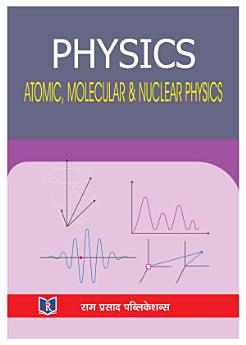PHYSICS: ATOMIC, MOLECULAR & NUCLEAR PHYSICS
About this ebook
Continuous X-rays spectrum and its Dependence on Voltage; Duane and Hunt Law; Characteristic X-rays; Mosely’s Law; Doublet Structure of X-rays Spectra; X-ray Absorption Spectra.
2. Molecular Spectra
Discrete Set of Electronic Energies of Molecules; Molecular Spectra; Rotational Spectra : Quantisation of Rotational Energies; Transition Rules and Internuclear Distance; Vibration—Rotation Spectrum of a Molecule : Quantisation of Vibrational Energy and Transition Rules; Electronic Spectra of Molecules; Dissociation Limits for Ground and other Electronic States.
3. Spectroscopy
Raman Effect; Stokes and Anti-stokes Lines; Complimentary Character of Raman and Infrared Spectra; Experimental Arrangements for Raman Spectroscopy; Spectroscopic Techniques; Spectroscopic Technique for the Visible Spectra; Spectroscopic Technique for Ultraviolet Spectra; Spectroscopic Technique for the Infrared Spectra; Absorption Spectroscopy; Double Bean Instrument; Different Types of Recording Systems.
4. Nuclear Physics-I
Interaction of Charged Particle with Matter; Interaction of Neutrons with Matter; Particle Detectors; Ionization Chamber; Proportional Counter; Geiger-Muller Counter (G-M Counter); Scintillation Counter; Diffusion Cloud Chamber; Spark Chamber; Emulsions; Nucleus Structure; Classification of Nuclei; General Properties of Nucleus; Nuclear Forces (p-p and n-p scattering); Meson's Theory of Nuclear Forces; Deuteron; Binding Energy of Deuterium; Why Electrons cannot be Present Inside the Nucleus ?
5. Nuclear Physics-II
Properties of a-Particles; Properties of b-Particles; Properties of g-Rays; Theory of b-Decay; Range of a-Particles; Geiger-Nuttal Law; Gamow's Theory of a-Decay; a-Particle Spectra (Discrete Energy Levels); Line and Continuous Spectrum; Nuclear Reactions; Conservation Laws; Compound Nucleus; Direct Reaction (Stripping and Pick-up Reaction); Liquid Drop Model; Semi-Empirical Mass Formula; The Shell Model; Nuclear Fission; Nuclear Fusion; Energy Production in Stars.








